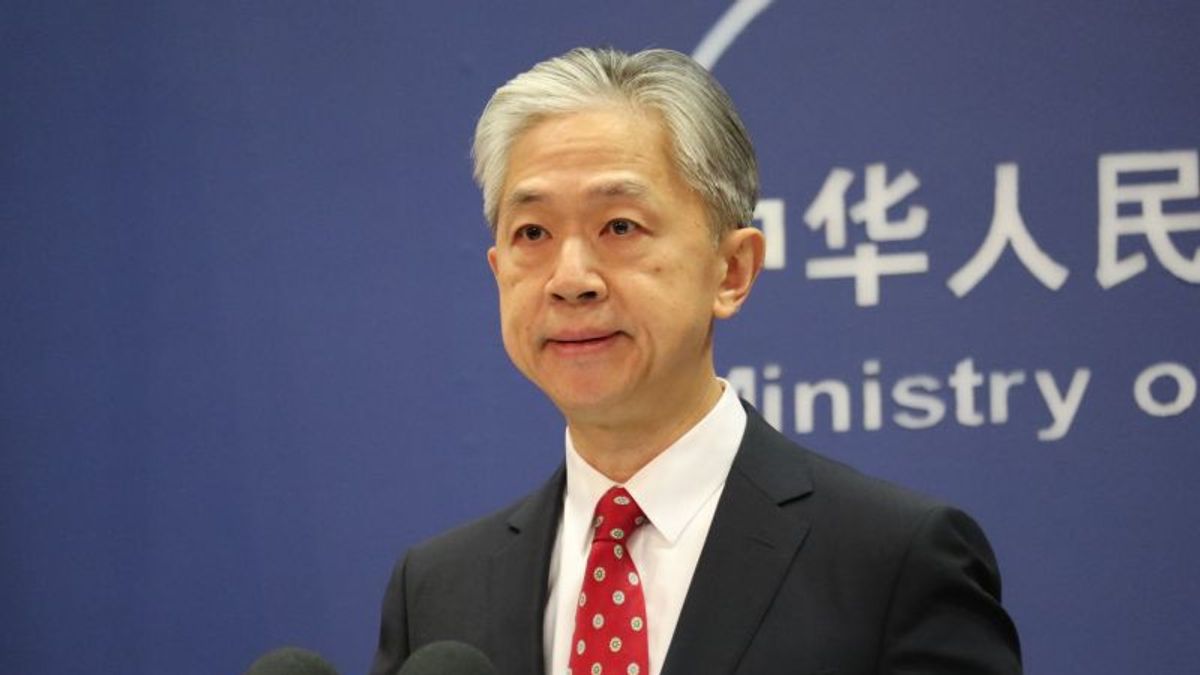JAKARTA - Chinese Foreign Ministry spokesman Wang Wenbin said the Japanese government must be responsible for the leakage of radioactive water from the Fukushima Nuclear Power Plant (PLTN) on Wednesday (7/2).
"Japan has a responsibility to publish the incident quickly, comprehensively, and transparently and responsibly to provide details of its condition," Wang said as quoted by ANTARA, Friday, February 9.
The responsibility, he said, needs to be carried out by Japan because the waste disposal plan will last for 30 years or even longer.
A Tokyo Electric Power Co (TEPCO) spokesman said there were an estimated 5.5 tons (5,500) of radioactive water leaked from PLTN Fukushima on Wednesday (7/2) in a facility that processed water.
The processing took place before most of the radioactive elements were filtered in state-of-the-art facilities - known as ALPS.
"This incident has again revealed the problems that have existed in TEPCO's internal management for a long time," Wang added.
TEPCO said a leak from the vent was discovered by a worker who was cleaning the vent before operating the facility.
Wang stressed China had many reasons to worry and a big question mark appeared after the incident.
"Can Japan guarantee safety and responsibility in managing wastewater disposal in the future? Can nuclearly contaminated water treatment and disposal facilities in Fukushima operate stably and effectively in the long term?" he said.
The leak of nuclearly contaminated water at the facility, according to Wang, has again shown the importance of an effective international monitoring scheme in the long term.
China urges Japan to be serious
responding to world concerns, disposing of nuclearly contaminated water in a responsible manner.
Japan, Wang said, also needs to cooperate with other countries in implementing an independent and effective international monitoring scheme in the long term to avoid the adverse effects of wastewater disposal into the sea.
SEE ALSO:
Due to the wastewater leak, TEPCO said there were no signs of contamination detected outside the facility. TEPCO also claimed there were "no significant changes" in radioactivity monitoring posts around power plants.
However, TEPCO plans to dispose of soil around areas that may have been contaminated.
PLTN Fukushima was destroyed by a major earthquake and tsunami in 2011, which killed 18 thousand people. The operation to clean up the facility is estimated to take decades.
Since August 2023, TEPCO has gradually begun releasing 1.34 million tons of processed water waste collected since the disaster into the Pacific Ocean.
Japan claims the wastewater is harmless and very dilute in the sea which has been dumped in stages for decades.
The claim was supported by the International Atomic Energy Agency (IAEA) after the agency under the United Nations system conducted a survey of environmental impacts, including by taking samples of water and fish.
However, China and Russia criticized the disposal of PLTN Fukushima waste and banned all imports of seafood from Japan.
The English, Chinese, Japanese, Arabic, and French versions are automatically generated by the AI. So there may still be inaccuracies in translating, please always see Indonesian as our main language. (system supported by DigitalSiber.id)















